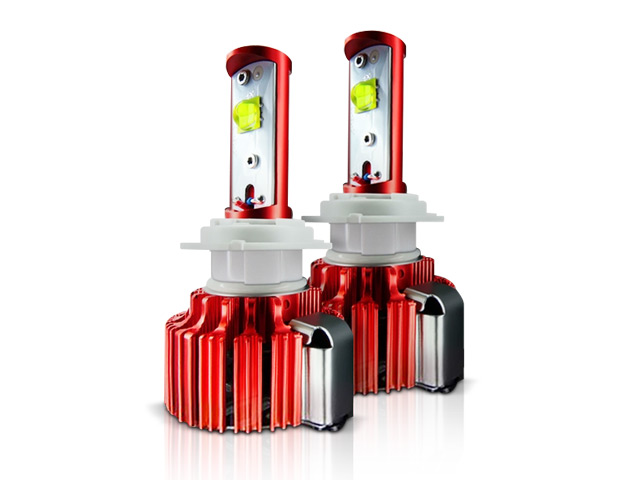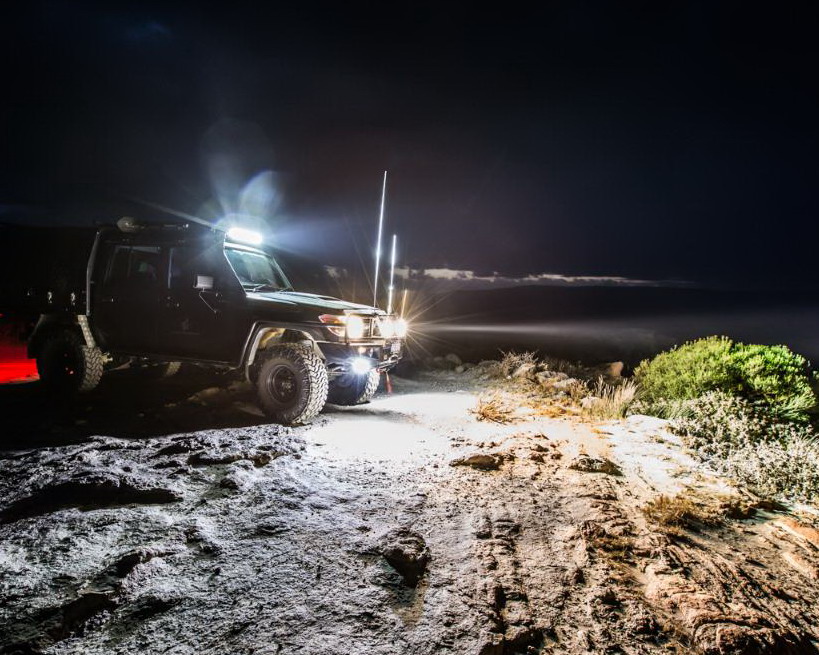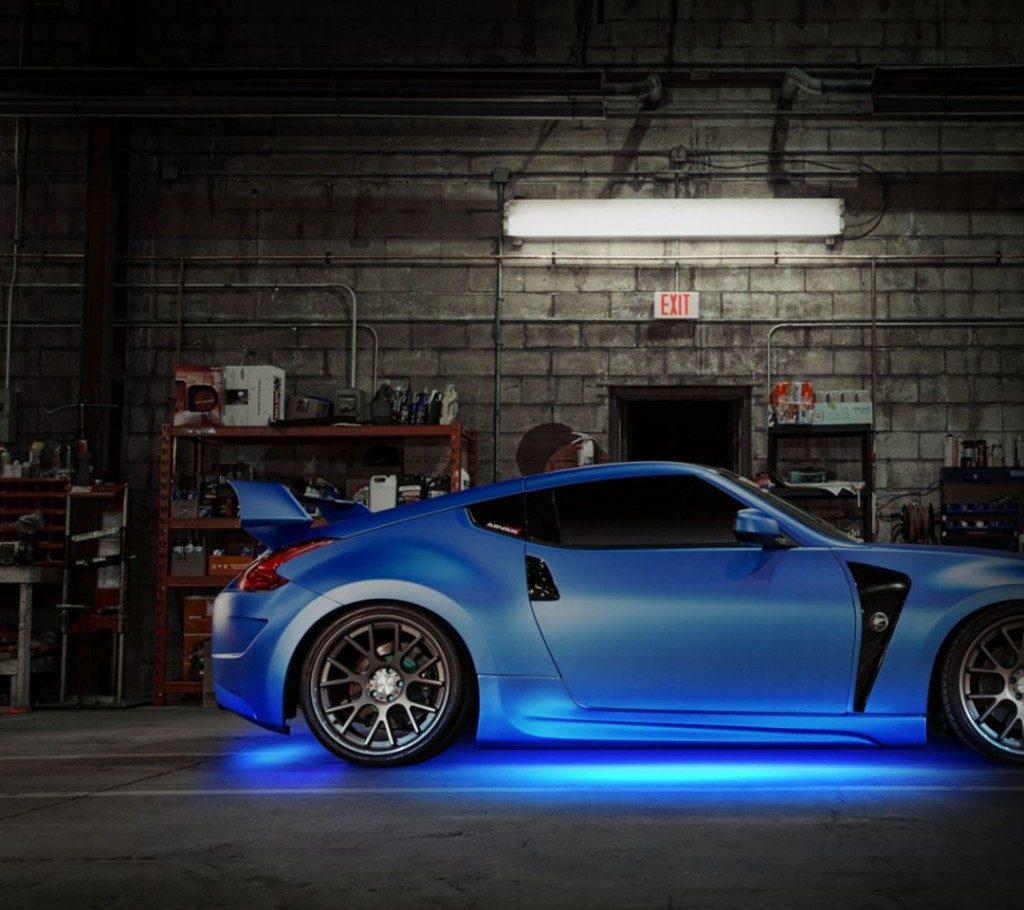
You see it all over the road today, cars and trucks with lights that could be seen from space on a clear night. These days it seems like everyone has a set of super bright headlights, but is brighter always better?
I say no. When auto lighting claims to be the brightest on the market, it doesn’t necessarily mean you are getting a better product. This is just like audio manufacturer claims of high wattage, without mention of the RMS rating, or usable power. There is another important factor to consider other than just lumen output or bulb temperature, and that is the beam pattern.
I know it is not nearly as sexy to talk about the beam pattern as it is to brag about how many lumens a headlight setup can crank out, but without this discussion you’ll have a bright light to look at that may not provide the illumination you want or need. Without the proper beam pattern, the light can shine in all directions and result in an unfocused and “foggy” illumination of the road ahead. If you are building a show car that doesn’t drive at night then that is fine, but most people actually need to see the road ahead.
LEDs
LEDs have really evolved in the auto lighting market from just interior decoration accents to full-use exterior lighting solutions. The California-based company OPT7 has been at the forefront of this transformation. LED lighting has some serious advantages over the previous champion of auto lighting- high intensity discharge (HID) lights.
I personally have had HID bulbs on my low beam, high beam, and fog light setup for the past 4 years, and there have been plenty of ups and downs during that time. The light production has been bright, but there are several things that have gone wrong. One of the problems with HIDs is that they are a pain to set up, because you need to find a place for this clunking ballast in already close quarters. Yes, I know there are “slim” ballasts and I do have those on my fog lights, but we are still talking about routing the wires and fixing a chunk of metal behind your lamps. While we are on the topic of the ballasts, I can say that in those four years I have replaced several, because they do go out from time to time. HID bulbs use an enclosed gas that reacts with the electric arc, so they need to be hollow, thus making them much more delicate than LEDs and producing whopping heat. I myself have broken at least one bulb and had to fork out the bucks to replace it. Granted, HID prices have gone down in the last few years, however newer LED setups have a sincere advantage over their predecessors. They are small, stay cool, they are low energy and last a long time without needing to be replaced. Not to mention they can be used in almost any configuration possible, for any purpose.
Headlights
OPT7 released their latest FluxBeam LED headlights with new technology that will be the future of automotive lighting. By eliminating dark spots, short beams and non-linear beams they can provide superior illumination in a more effective pattern. What makes these headlights even more impressive is that they have a mini 7,000rpm fan built in to keep the setup cool, and the whole assembly has a waterproof seal. The fan is controlled by an LED ASIC chip that monitors the speed to provide optimum cooling automatically. It is also combined with an aluminum heat sink that cools an already low-heat source up to 30% over standard lighting. This heat reduction contributes to the 50,000 hour life of the Cree LEDs.
What makes things even easier is the true plug-and-play installation and complete OEM fitment for all their headlights and fog lights. The OPT7 XLamp XB-D fog lights are designed with a similar OEM fitment and 6 Cree LEDs to produce high output light at 115°, taking full advantage of the factory lamp housing and really providing solid illumination. The forward-facing LEDs are actually housed behind an optical projector lens that refocuses the light into a high-density beam, which increases the effective light distance.
Aftermarket light bars have been steadily gaining popularity for off-road enthusiasts looking for more visibility and practical application. The C2 Series light bars take this to the extreme by using both a flood and spotlight combination LED setup for maximum distance and wide angle coverage. This delivers up to 40% brighter output than other light bars. OPT7 added oversized cooling fins with milled ridges, to maximize heat sink efficiency for an all-around high performing light. When it comes to off-roading you have to expect the unexpected, and be ready for anything. With this in mind the C2 light bars use a heavy duty die-cast aluminum housing that is powder coated for corrosion-resistance, but also rugged enough to withstand a rollover. Now ideally you would not need to test that out for yourself, nor would you want to submerge your vehicle under a meter of water for 30 minutes. These light bars can stand up to the challenge if you feel so inclined.
If you were around in the late 90’s and paid attention to the auto scene you probably saw almost every show car or street tuner rolling around with some sort of underglow body lighting. These old neon-filled tubes didn’t have the best color definition, and they were very fragile. As one might expect, hollow glass tubes on the underside of a car don’t last all that long. Glow kits of today have vastly improved over the old style, and OPT7 lead the charge. Each LED on their Aura strips use 3 micro-LEDs, one for each primary color. What they managed to do was mix the color at the smallest scale, which produces a pure and vivid color. It also allows for ultimate remote customization between 16 different colors. Since LEDs are more flexible than neon tubes they can be used for motorcycles, auto interior or even wheel well lighting.
It goes without saying that there are always going to be companies claiming to have the brightest, loudest, or fastest products. Without the ability to focus that power into something refined, all you really have is lost potential and hype. The best advancements find a way to blend power and finesse, and continue to push the envelope of what is possible.
What do you use to light up the road?





